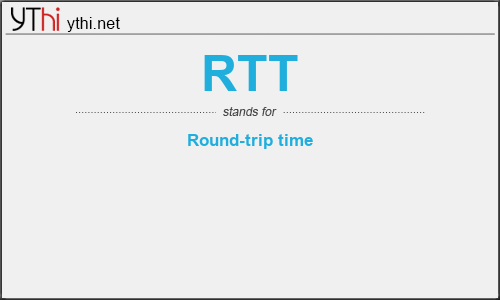What does RTT mean? What is the full form of RTT?
The full form of RTT is Round-trip time
Round-trip time (RTT) is the duration in milliseconds (ms) it takes for a network request to go from a starting point to a destination and back again to the starting point. RTT is an important metric in determining the health of a connection on a local network or the larger Internet, and is commonly utilized by network administrators to diagnose the speed and reliability of network connections.
Reducing RTT is a primary goal of a CDN. Improvements in latency can be measured in the reduction of round-trip time and by eliminating instances where roundtrips are required, such as by modifying the standard TLS/SSL handshake.
Round-trip time RTT’s another form is round-trip delay(RTD)
The full form of RTT is Render-to-Texture
Conceptually, you can think of render-to-texture as being like rendering a scene into a hidden window, and then copying the contents of the window into a texture. Such hidden windows are not actually called windows, they’re called “buffers.” Furthermore, the data is usually not copied into the texture, it’s usually transferred into the texture using a more efficient mechanism. Details aside, though, if you think of it as rendering into a hidden window and then copying into a texture, you have a pretty accurate idea of what render-to-texture does.
Render-to-texture is particularly useful when you’d like to apply a “filter” to your scene. If you’ve ever used Photoshop, you know what a filter is: Photoshop has lots of interesting filters that do blurring, texturizing, edge detection, and more. The first step in implementing a filter is to render the entire scene into a texture. Then, the texture is applied to a full-screen quad and displayed in a window. So far, it looks the same as if you simply rendered the scene into the window. However, by applying a shader to the full-screen quad, you can implement your filter.


Leave a Reply
You must be logged in to post a comment.